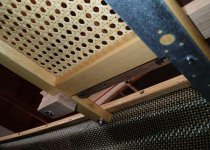I just picked up a '98 kevlar Malecite that is in like-new condition, except for one thing...

Seems like a waste to pull the whole thing and re-cane it for such a little tear. But I don't want to just let it go either. Anybody have a tip on the best way to mend it? I'm not expecting it to last forever or look perfect, but it seems like I should be able to buy some time without making it too ugly.

Seems like a waste to pull the whole thing and re-cane it for such a little tear. But I don't want to just let it go either. Anybody have a tip on the best way to mend it? I'm not expecting it to last forever or look perfect, but it seems like I should be able to buy some time without making it too ugly.

